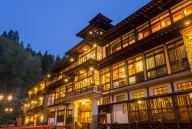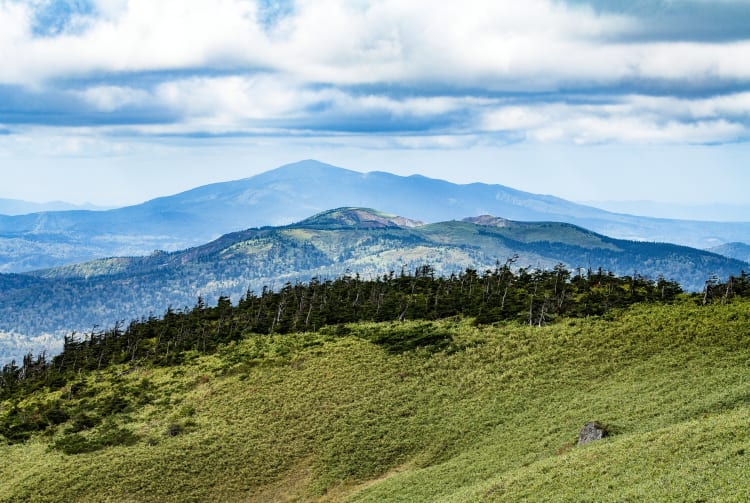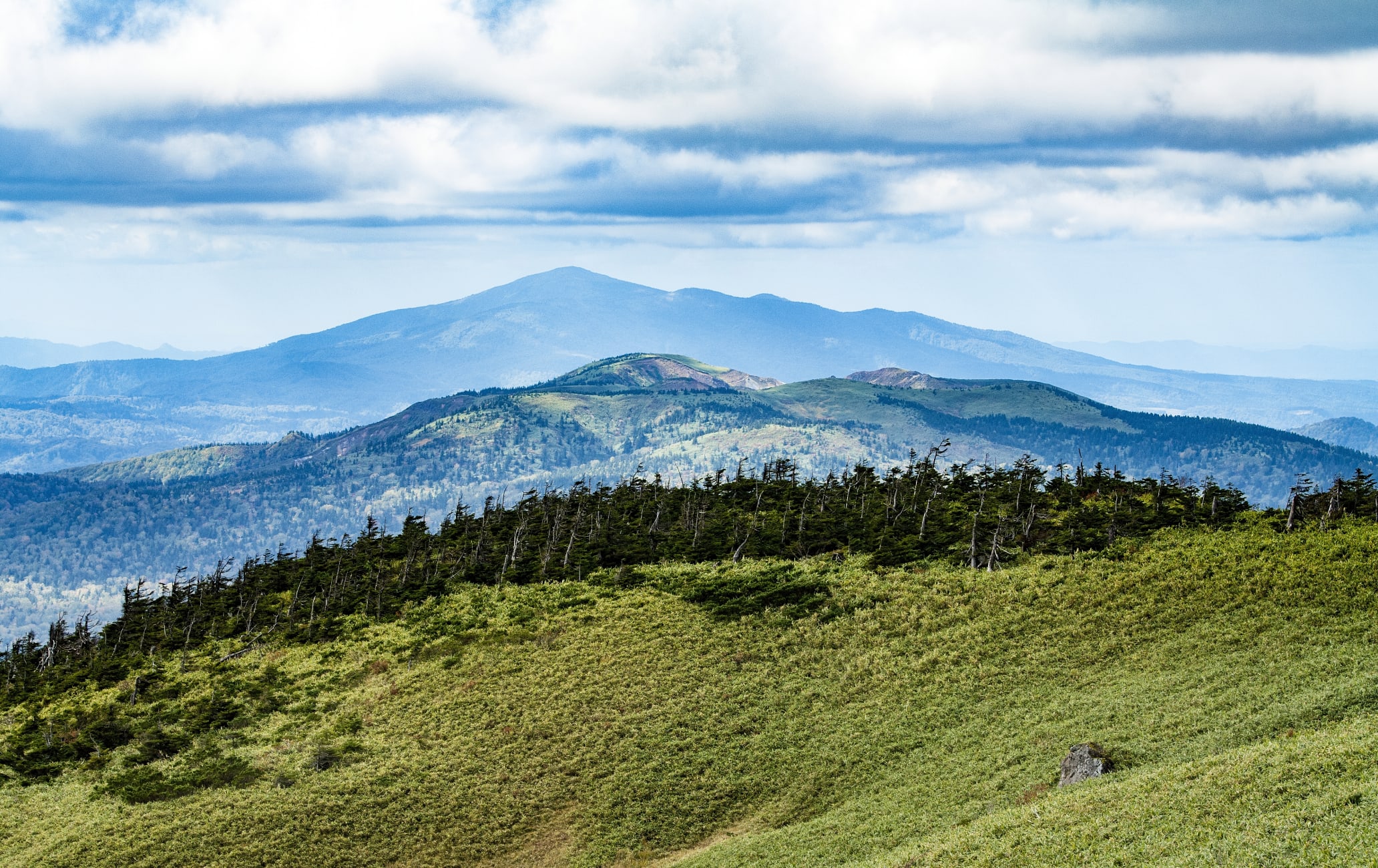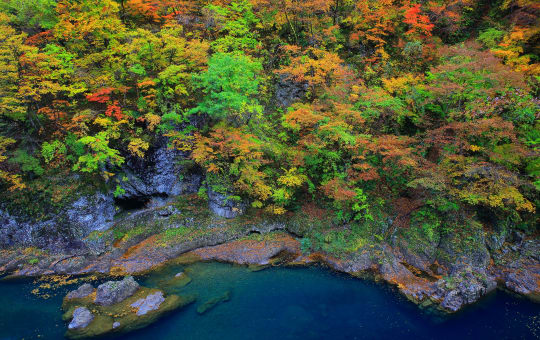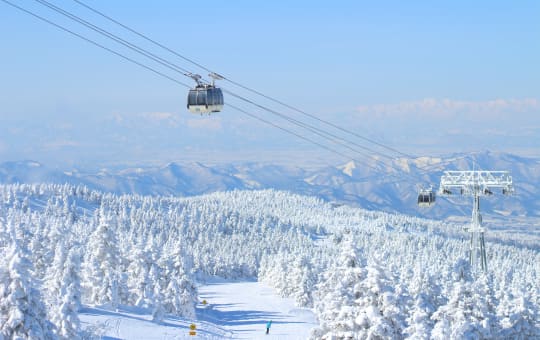Ein flacher Schichtvulkan mit bunten Wäldern und einer reichen Tierwelt
Der beeindruckende, 1.613 Meter hohe Berg Hachimantai mit seinen großartigen Wanderwegen ist einer der schönsten Orte, um die atemberaubende Landschaft der Präfekturen Iwate und Akita zu bewundern.
Wenn Sie sich für Geologie interessieren: Der Berg ist ein Schichtvulkan – auch bekannt als Stratovulkan –, der auf natürliche Art aus vielen Schichten getrockneter Lava, Bimsstein und Vulkanasche entstanden ist.
Nicht verpassen
- Wanderwege verschiedenster Schwierigkeitsgrade erkunden
- Den Hachiman-numa-See mit umliegender Sumpflandschaft
- Ein Bad im Toshichi Onsen, einer natürlichen Thermalquelle auf 1.400 Meter Höhe
Anfahrt
Der Berg Hachimantai ist vom Bahnhof Morioka aus mit dem Auto oder in der Hauptsaison zwischen Mai und Anfang November auch mit öffentlichen Verkehrsmitteln leicht zu erreichen.
Nehmen Sie einen Bus in Richtung Hachimantai von der Haltestelle 3 am östlichen Ende des Bahnhofs Morioka und steigen Sie bei Chausuguchi aus. Wenn Sie mit dem Auto unterwegs sind, nehmen Sie die Hachimantai Aspite Line, eine schöne Straße, die die Präfektur Iwate im Osten mit der Präfektur Akita im Westen verbindet.
Ab der Goldenen Woche Anfang Mai bis zur ersten Novemberwoche fahren die Busse dreimal täglich. Im Winter bestehen keine Verbindungen, oder die Busse verkehren nur selten.
Beliebte Wanderwege
Die Dauer der verschiedenen Wanderrouten reicht von 40 Minuten bis zwei Stunden und unterscheidet sich im Schwierigkeitsgrad, doch alle bieten ebenso schöne Berglandschaften. Die Fußwege sind gut gepflegt und eignen sich sowohl für Anfänger als auch für erfahrene Wanderer.
Einer der beliebtesten Wege in der Umgebung startet an der Chausuguchi-Bushaltestelle und führt zum Gipfel des Berges Chausu, einer von Hachimantais benachbarten Gipfeln. Die Hachimantai-Region und ihre zahlreichen Wanderwege sind besonders im Oktober beliebt, wenn die Bäume ihr goldenes Herbstkleid tragen.

Ein einfacher Weg
Die kürzeste und beliebteste Route ist der Sumpfland-Weg, der um Hachiman-numa und Gama-numa führt, zwei Seen im Feuchtgebiet. Der Großteil des Weges führt entlang eines erhöhten Holzstegs mit schönem Blick auf die Seen und die umgebende Sumpflandschaft.
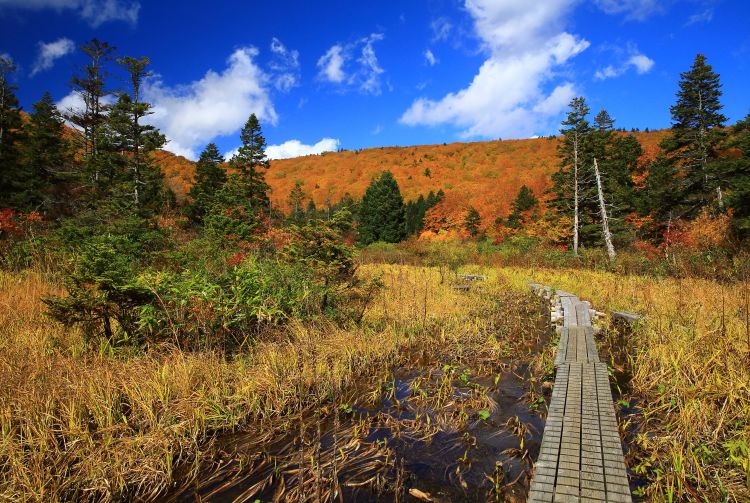
Der Hachiman-numa-See ist mit einem Umfang von einem Kilometer der Größte der Sumpfland-Seen in der Region. Während der Wanderung haben Sie die Gelegenheit, Wildvögel und unzählige Pflanzenarten zu entdecken, darunter auch etliche seltene alpine Varianten.

Zwar erfreut sich das Gebiet im Herbst größter Beliebtheit, doch im Sommer, wenn das Wetter meist sonnig ist und es vergleichsweise wenig Besucher gibt, zeigt sich die Umgebung wohl von ihrer schönsten Seite.
Wildtiere beobachten
Halten Sie während Ihrer Wanderung in der Hachimantai-Gegend Ausschau nach dem Japanischen Laubfrosch, dem Steinadler, dem Japanischen Serau und dem Kragenbären – dies sind nur einige der vielen Waldbewohner der Umgebung.

Die berühmte Aspite Line
Wenn Sie ein Auto mieten, dann lassen Sie sich keine Fahrt entlang der Aspite Line entgehen. Die 27 Kilometer lange Straße schlängelt sich zwischen den Gipfeln hindurch und ist im Herbst besonders beliebt, wenn die Gegend in feurigen Rot- und goldenen Brauntönen erstrahlt. Im Winter ist die Straße aufgrund von starkem Schneefall gesperrt, doch bei der Wiedereröffnung im April wird sie von beeindruckenden, strahlend weißen Schneemauern gesäumt.































